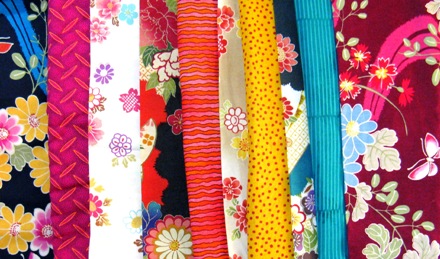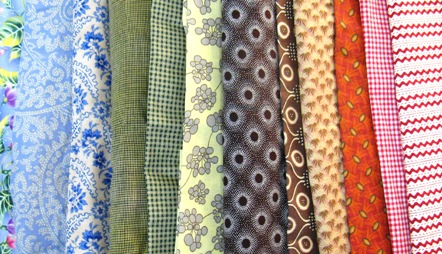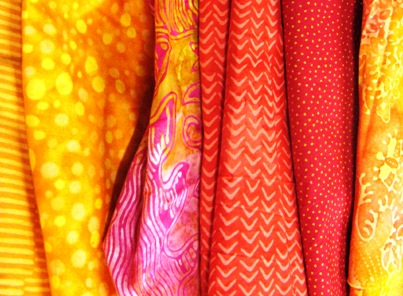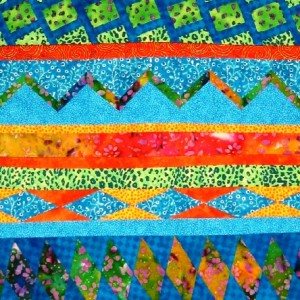Quilting Fabrics Essential for the Beginner
by Terry White
Cotton Fabric
When you are new at something, it is best to use the easiest materials. When it comes to sewing a quilt, the best material to use is 100% cotton fabrics. It is very easy to find cotton fabric for quilting these days. Walk into any fabric store and they will have a whole section for quilting. Look at and feel these fabrics. The feel will be a medium weight fabric with body. This is different from lightweight fabrics or upholstery fabrics. There will be a natural feel to the fabric as well, not slippery or heavy or rough. So, this fabric is perfect for cutting out shapes for appliqué or cutting and stitching patchwork.
You will see a beautiful variety of colors and patterns in these cotton fabrics. Where do you start? My first advice is to start with your favorite colors and styles. You will enjoy the process with every quilt you make if you use fabric in the colors and patterns that you love. Here are three representative groups of fabric:

The first group of fabrics is of Japanese design and interspersed with small printed fabrics. The Japanese patterns are rather large and spray across the fabric. The smaller prints sort of contain the large prints and work well together in a patchwork quilt. The colors of the small prints also bridge the colors of the large prints. So, if you like Japanese style and bright intense colors, then this group may appeal to you.

This second fabric grouping is of more old-fashioned or traditional prints. You will find this type of printed fabric in quilts made in the early to mid 1900’s. The fabrics in the photo are reproductions of those old-fashioned fabrics. Quilters who like this style of quilts tend to like a muted color palette and traditional quilt patterns.

This group of fabrics is called Batik. Batiks are made in India and the prints are made by printing the fabric with wax and then they are dyed in various colors. The wax is then melted away, leaving the printed image. So, the prints won’t be perfect even though they are perfectly beautiful. Batik is more tightly woven then regular cotton fabric and some of the wax residue will remain, so they are a little tougher and stronger than regular cotton prints. This group is also very bright in color and appeals to some quilters.
I have shown you three different groups of fabrics, each of which is very popular among quilters. There are many more and lots to learn. You must make your own choices. The more quilts you make (or look at) the more you will learn about how the colors and prints of fabrics work together.

The pattern you will use for your first quilt will also help to determine what fabrics you choose. For example, if you make a pattern which requires high contrast among the fabric pieces, then it will be important to choose dark, medium and light colors to create that contrast. The example to the left is a detail from a Seminole patchwork quilt. The high contrast is created by using colors that contrast as well as dark, medium and light of one color (blue in this case).
Pre-wash your fabrics
There are several reasons to pre-wash your fabric before starting a quilt. Cotton fabrics are finished with assorted chemicals to make them look good in the store, help prevent wrinkles and adds a sheen.
The chemicals can:
1. be harmful to one’s skin over long periods of exposure;
2. hide the real qualities of the fabric by filling in the weave of the fabric and giving the appearance of a finely woven material;
3. be holding in dyes that may run when washed.
Backing Fabric
You want to use the same high quality cotton fabric for the back of your quilt as for the top. Some people use sheets, but this isn’t a good idea because sheets usually have a polyester content in them which causes the needle to skip when machine quilting. If the quilt is to be hand quilted, needling through polyester/cotton mix is very hard. If the sheet used is very high thread count cotton, this is just as hard to work with as the poly/cotton blend. If you have a 100% cotton sheet that feels like your regular cottons used for the top, then this will be fine to use.
Next: Quilt Battings & Threads.
For more information on how to quilt, especially for the beginner, click here.

Pingback: Quilting Patterns
Pingback: How To Make A Quilt: Part 1 – Tools For Every Quilter | Havel's Sewing